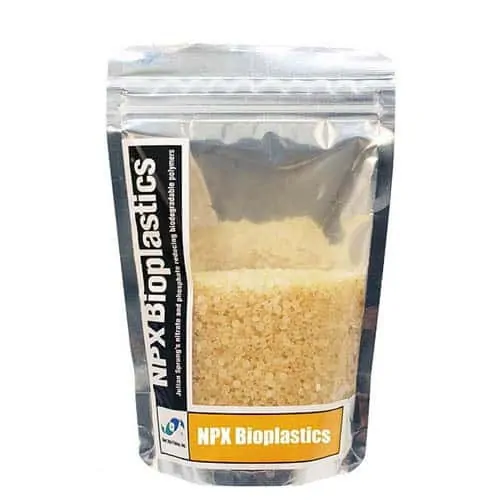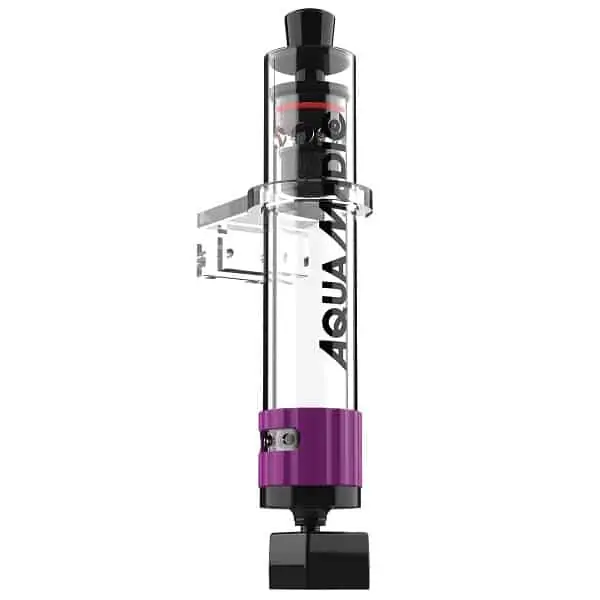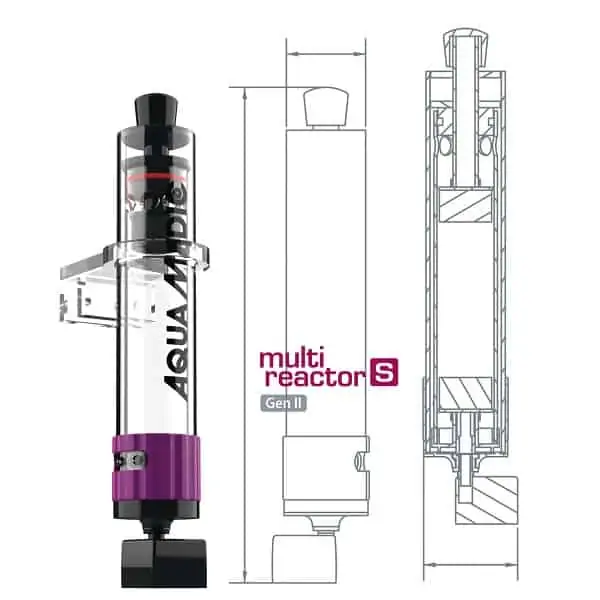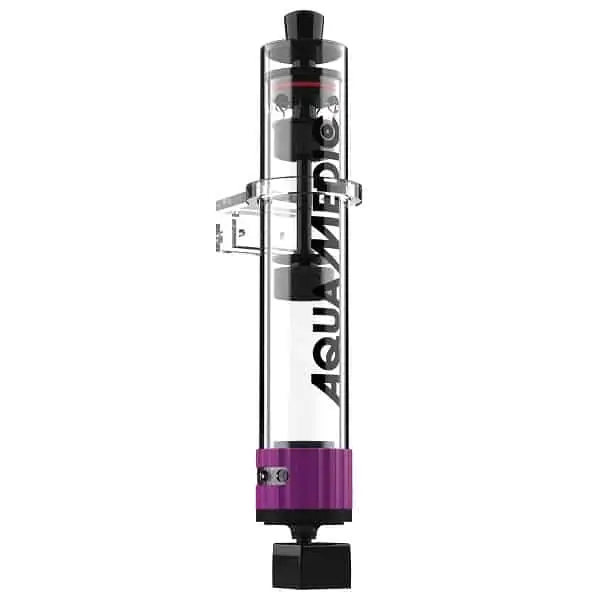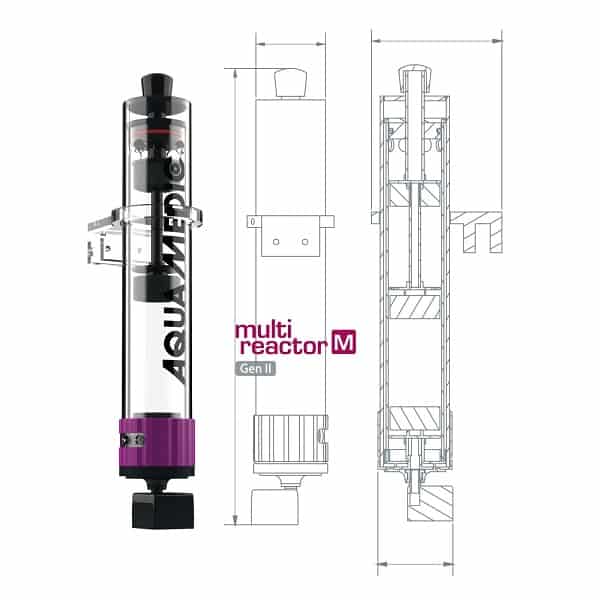NPX Bioplastics
€14,50 – €68,50
Two Little Fishies NPX Bioplastics is a biopolymer filter media that helps maintain aquarium quality of water by supporting the growth of nitrate and phosphate reducing bacteria
Two Little Fishies NPX Bioplastics is a biopolymer filter media that helps maintain aquarium quality of water by supporting the growth of nitrate and phosphate reducing bacteria
Discover the benefits of using NPX Bioplastics:
- Aquarium nitrate and phosphate removal biopolymer filter media
- Phosphate levels in the aquarium decrease with the help of beneficial bacteria
- Bacteria consume nitrate and phosphate while growing on the filter medium
- Ideal for use in a fluidized reactor
Utilize the power of nature to effectively reduce nitrate and phosphate levels in your aquarium. Two Little Fishies NPX Bioplastics is a fantastic biopolymer filter media that supports the growth of bacteria that reduce these substances. Enjoy a natural and cost-effective way to manage aquarium phosphate by cultivating beneficial bacteria!
NPX Bioplastics consists of biodegradable polymer pellets that can be used in a fluidized reactor. Similar to bacteria, excessive growth on the pellet surfaces can slough off, allowing for harvesting by a protein skimmer or serving as a natural food source for filter-feeding invertebrates such as corals, mussels, and sponges. The pellets create anaerobic zones that foster conditions where bacteria associated with denitrification (nitrate removal) thrive. This natural approach can be combined with protein skimmers and phosphate media to effectively reduce high levels of nitrate and phosphate that compromise aquarium water quality.
To install NPX Bioplastics, use the PhosBan Reactor 150 along with the NPX bioplastics screen for easy control of nitrate and phosphate (each sold separately). Allow time for bacterial populations to reach effective levels. For optimal results, start with smaller amounts and gradually add more NPX Bioplastics as the media become inoculated with beneficial bacteria. After two to four weeks, you should see a decrease in nitrate and phosphate levels, suitable for aquariums of up to 190 liters using 200ml trays.
It is important to use NPX Bioplastics in conjunction with appropriate aquarium filtration, as well as ensuring strong water circulation and aeration. For seawater aquaria, the use of a protein skimmer is recommended to effectively export bacteria and assimilated nutrients.
Instructions
NPX Bioplastics perform best when installed in a fluidized bed filter like the PhosBan Reactor 150 (# 18413) or 550 (# 71947). Warning: To prevent the chance of cloudy white bacteria blooms in the water, it is advisable to start with half the recommended dose when dealing with high nitrate aquariums. Gradually increase to a full dose of 100 ml per 95 liters over a few weeks. If a bloom occurs, remove half of the NPX Bioplastics from the reactor and keep them moist but not submerged in a bag. For more demanding aquariums, larger quantities may be used, but it may be necessary to combine NPX Bioplastics with PhosBan granular iron oxide media (# 13157) in separate reactors, especially if phosphate levels from food are accumulating. Check the media level within the filter regularly and add approximately every three to six months, as NPX Bioplastics are consumed slowly.
Caution
Ensure sufficient water flow through NPX Bioplastics to prevent the production of hydrogen sulfide gas. Solid water circulation, aeration, and/or surface foaming in the aquarium will help maintain high oxygen saturation when using this product. For seawater aquaria, it is essential to use a protein skimmer to export bacteria and assimilated nutrients effectively. The output of the filter containing the pellets does not need to be close to the inlet of the skimmer, but having a protein skimmer in the system is crucial.
General Information
NPX Bioplastics are pelletized biodegradable polymers designed to promote the growth of bacteria that assimilate nitrate and phosphate. As bacteria grow on the pellet surfaces, the excess biomass can be removed via a protein skimmer or serve as food for plankton filter-feeding invertebrates such as corals, mussels, and sponges. The pellets also develop anaerobic zones that facilitate denitrification.
NPX Bioplastics granular plastic media is made from biodegradable polymers and is intended for use in a fluidized reactor. The slow release of biological food from these plastics encourages the development of bacteria that assimilate nitrate and phosphate. These bacteria can be harvested by protein skimmers, allowing for a natural reduction of nitrate and phosphate levels. Additionally, the bacteria serve as a food source for filter-feeding invertebrates like corals, mussels, sponges, and clams.
NPX Bioplastics Screen
Instructions for the NPX screen for PhosBan Reactor 150 and PhosBan Reactor 550:
The NPX Screen prevents NPX Bioplastics or other biodegradable pelletized media from passing through the dispersion plates into the PhosBan Reactor 150 or PhosBan Reactor 550. These screens are used instead of foam sponges in the PhosBan reactors. Simply remove the sponges and place the cut screens on top of the Dispersion Plates. Typically, the screens will fit well, but small plastic cable ties can also be utilized to secure them to the Dispersion Plate.
- Preparation of the PhosBan Reactor 550 Screens:
- Using scissors, cut the screen diameter through two windows, leaving the outer rib intact. Carefully cut the first two windows in the center of the screen so that it fits perfectly on the PhosBan Reactor Center Pipe.
- Preparation of the PhosBan Reactor 150 Screens:
- Using scissors, cut the screen diameter through five windows while keeping the outer rib intact. Carefully cut the first two windows in the center of the screen so it fits exactly on the PhosBan Reactor Center Pipe.
- Finishing the Assembly:
- Slide the screens over the clear tubes and across the Dispersion plates. Place the second assembly in the PhosBan Reactor and press the screen down (PhosBan Reactor 550 for PhosBan Reactor 550 and using a PhosBan Reactor 150 criterion) to ensure that the screen is placed flat all around the Dispersion Plate. While it is usually not necessary, plastic cable ties can be used to keep the screen secure. Add NPX Bioplastics and place the top Dispersion Plate and screen in the same way.
Guidelines
NPX Bioplastics are best utilized in a fluidized bed reactor. For 200 ml of NPX Bioplastics, use a pump with a capacity of 1100-1300 lph. For 400 ml of NPX Bioplastics, choose a pump with a capacity of 1300-1900 lph.
Brand
Two Little Fishies
You may also like…
Mediafilters

